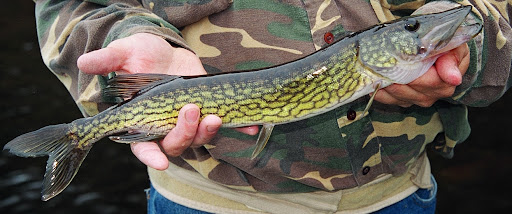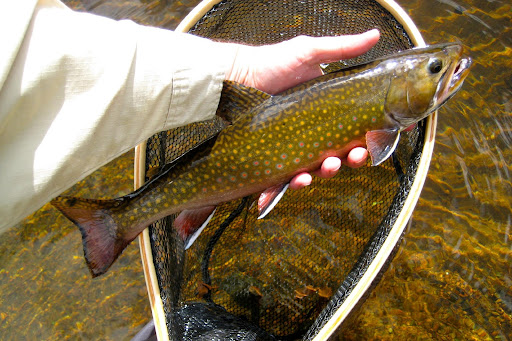Long, narrow, torpedo-shaped, green body with a darker back and white belly. Adults have chain-like pattern on sides; juveniles lack pattern. Long snout, akin to a duckbill, filled with many large, sharp teeth. Caudal fin is deeply forked. Average length is 15 to 20 inches (38 to 51 cm).
Inhabits shallow, vegetated ponds, lakes and sluggish streams. Chain Pickerel are voracious predators known to consume fish, aquatic invertebrates, rodents and even snakes. Within just a few years, native speckled trout population can be decimated. Not only transforms aquatic ecosystems, but also negatively impacts traditional sport fishing opportunities. This invasive is an exceptional competitor capable of decimating native trout populations, thus negatively impacting traditional sportfishing opportunities in the province.
Illegally introduced in southwestern Nova Scotia during the 1940s. Illegal introduction, in combination with natural migration, has expanded their distribution.

Native fish species such as Speckled Trout and White
Perch are exciting and tasty sport fish. The presence of Chain Pickerel often eliminates populations of these preferred native sport fish.
Long narrow fish, black and green chain pattern on side, snout full of sharp teeth.


Native fish species, like Speckled Trout and White Perch, are exciting and tasty sport fish. The presence of Chain Pickerel often eliminates populations of these preferred native sport fish.

Pickerel have many rows finely serrated, inward facing teeth. These teeth
are used to capture and hold prey, which is then turned and swallowed head first!
If you’re in a lake or river that is known to have Chain Pickerel, keep your fishing gear, boating gear, livewell
and buckets clean so that you’re not accidentally transporting fish or fish eggs into another watershed. It is illegal
to use or possess Chain Pickerel for bait in Nova Scotia. If you spot these invasive species, report the location to
iNaturalist or directly to the NSISC.
Join our mailing list.